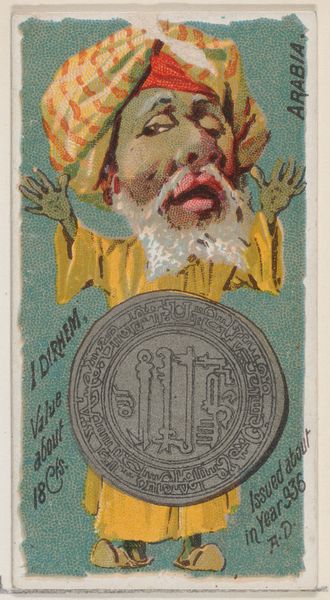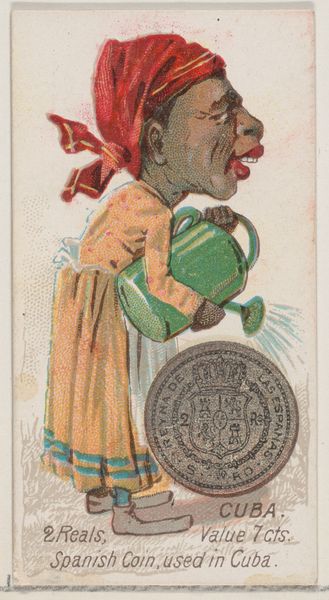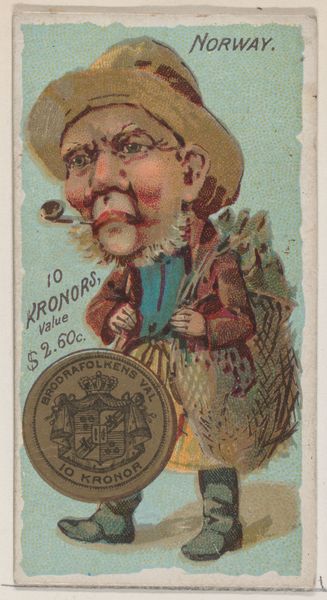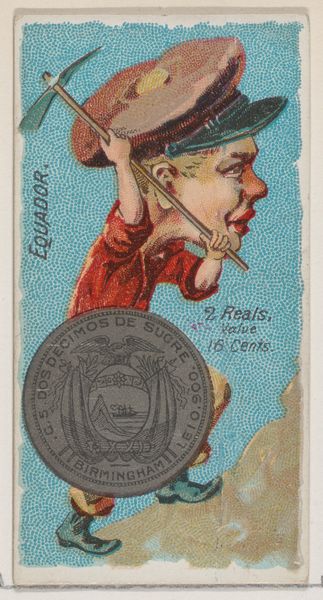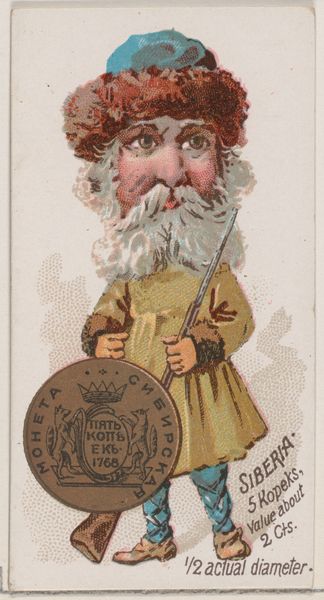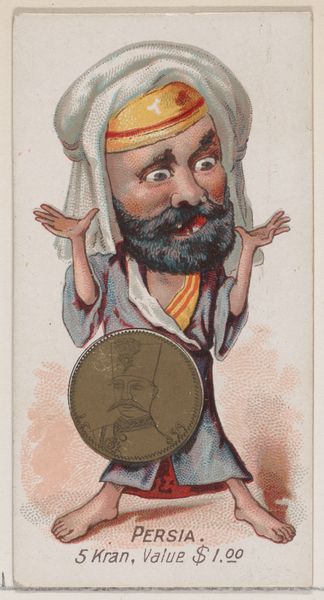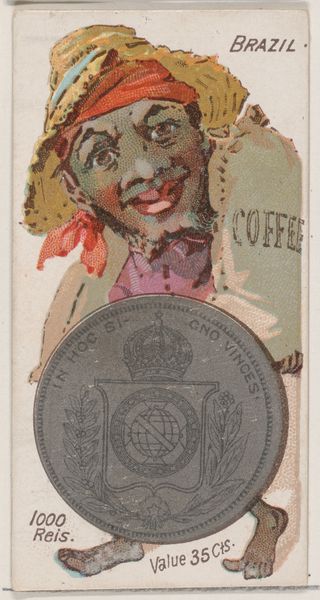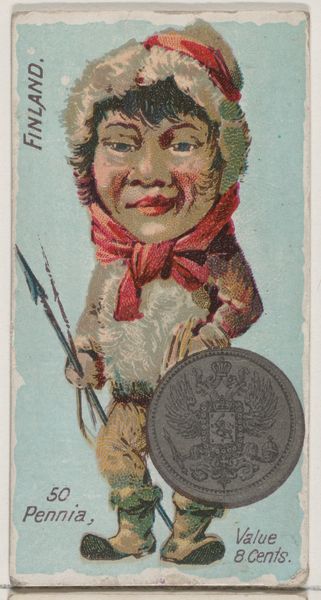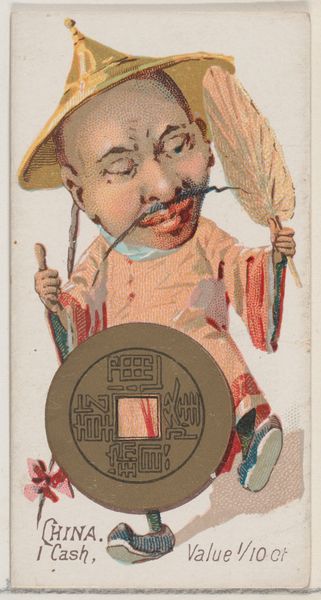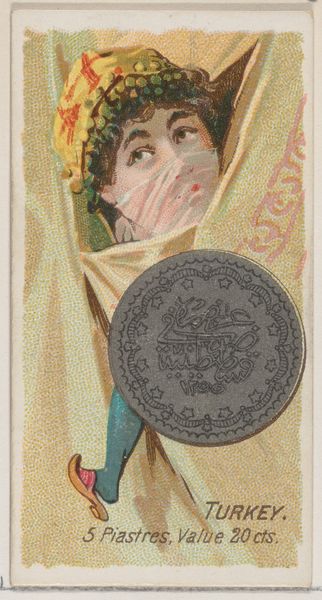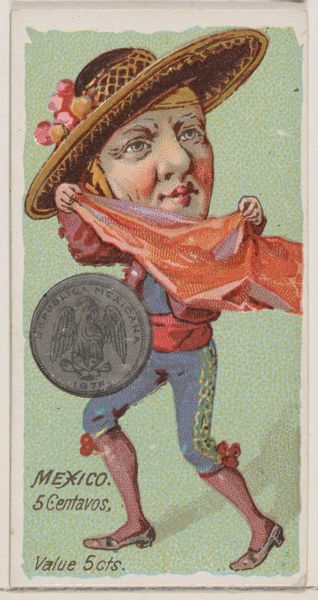
Caricatured Arabian, 1 Dirhem, from the series Coins of All Nations (N72, variation 2) for Duke brand cigarettes 1889
0:00
0:00
drawing, coloured-pencil, print
#
portrait
#
drawing
#
coloured-pencil
# print
#
caricature
#
coloured pencil
#
orientalism
#
men
#
coin
Dimensions: Sheet: 2 3/4 x 1 1/2 in. (7 x 3.8 cm)
Copyright: Public Domain
Curator: Oh, wow, this one makes me a little uncomfortable! There's a…peculiar charm, perhaps, to this caricature. It almost feels… I don't know, a bit mocking? Editor: We’re looking at “Caricatured Arabian, 1 Dirhem," one entry from W. Duke, Sons & Co.'s series, “Coins of All Nations,” dating back to 1889. It’s a color print using colored pencils, currently held at the Metropolitan Museum. You say uncomfortable, what exactly do you mean? Curator: Well, just look at him! The exaggerated features, the…sort of vacant expression. And the coin obscuring his body? It's as if he's reduced to nothing more than his monetary value, right? It's playing into stereotypes in a pretty bold way. What do you make of its form? Editor: Formally, the print exhibits characteristics common to Orientalist depictions of the late 19th century. Note the reduction of a person to flat planes and outlines, emphasizing perceived racial characteristics. Then contrast this to the round numismatic artifact taking center stage, laden with far more detail. How does this interplay enhance its caricature? Curator: It's quite insidious. See, the coin, a '1 Dirhem,' which it actually names and describes as being "value about 18 cents"…it dominates him! He becomes a walking, talking… or maybe just standing... embodiment of currency. The reduction in artistry on his person also implies something beyond physical caricature… a lacking humanity perhaps? Editor: Precisely. And the inscription stating it was "Issued about in Year 936 A.D.” serves not as historical record, but more to further emphasize an exaggerated, timeless oriental “otherness” from the perceived superiority of contemporary Western culture. It reflects contemporary political and economic biases in visual terms. Curator: Ah, "biases in visual terms." Beautifully put. Though unsettling, it forces one to ponder about the power of images to shape prejudiced perceptions, you know? Especially since they appeared on freaking cigarette cards! Editor: The popular reach should not be ignored. Despite our contemporary critique, the print exemplifies art as a mirror reflecting, often unconsciously, dominant ideologies of its era, both beautiful and horrifying in that purpose. Curator: Right! Art as a mirror – sometimes showing us things we really don't want to see. That is definitely a piece I will be chewing on for some time to come. Editor: An incisive and troubling peek at our past and persistent problems. The image persists with questions of the ethics of representation and lasting cultural legacies.
Comments
No comments
Be the first to comment and join the conversation on the ultimate creative platform.
